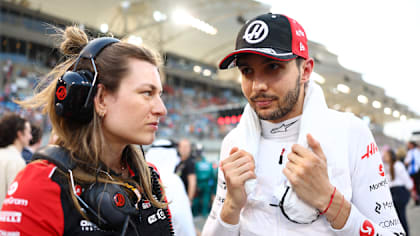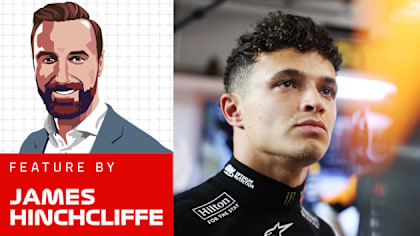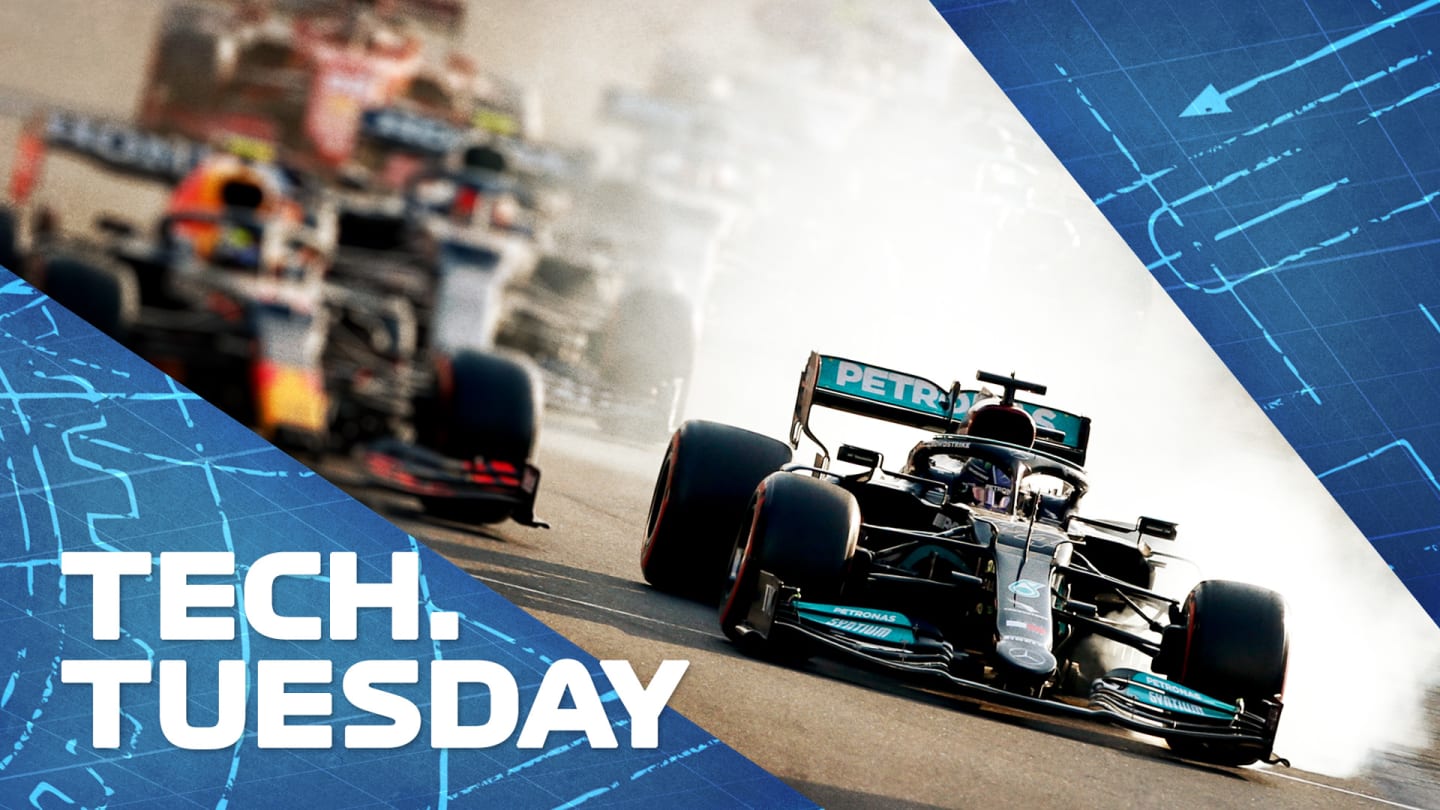
Technical
What is the 'magic' brake setting that cost Hamilton in Baku – and why do Mercedes struggle at low-grip tracks?

Share

Mark Hughes examines Lewis Hamilton's race-defining issue at the end of the Azerbaijan Grand Prix, when his chance of re-taking the Championship lead went up in a huge puff of tyre smoke – and looks at why Mercedes are struggling on low-grip tracks. Giorgio Piola provides technical illustrations.
Lewis Hamilton’s ‘brake magic’ error at the final restart was one of the big stories of the Azerbaijan Grand Prix, which, in combination with the other big story – Max Verstappen’s tyre blowout – ensured there was no change at the top of the championship points table.
The brake magic button on the back of the Mercedes steering wheel is there to give an instant switch to almost full front brake bias as an aid to heating up the front tyres before the start or restart of a race. In normal running the front bias would be running at something like 52-53%. Brake magic switches it instantly to whatever it’s been set for – in this case believed to be 86.5%. It is not a race setting and is only used on warm-up laps or behind the Safety Car.
That is purely a setting for generating heat in the wheel rims, which is then conducted to the tyres. With the fronts applying almost all of the car’s braking force, the heat generated by the carbon brake discs (which can run beyond 1,000 degrees Celsius) and metal calipers quickly increases more than proportionately.
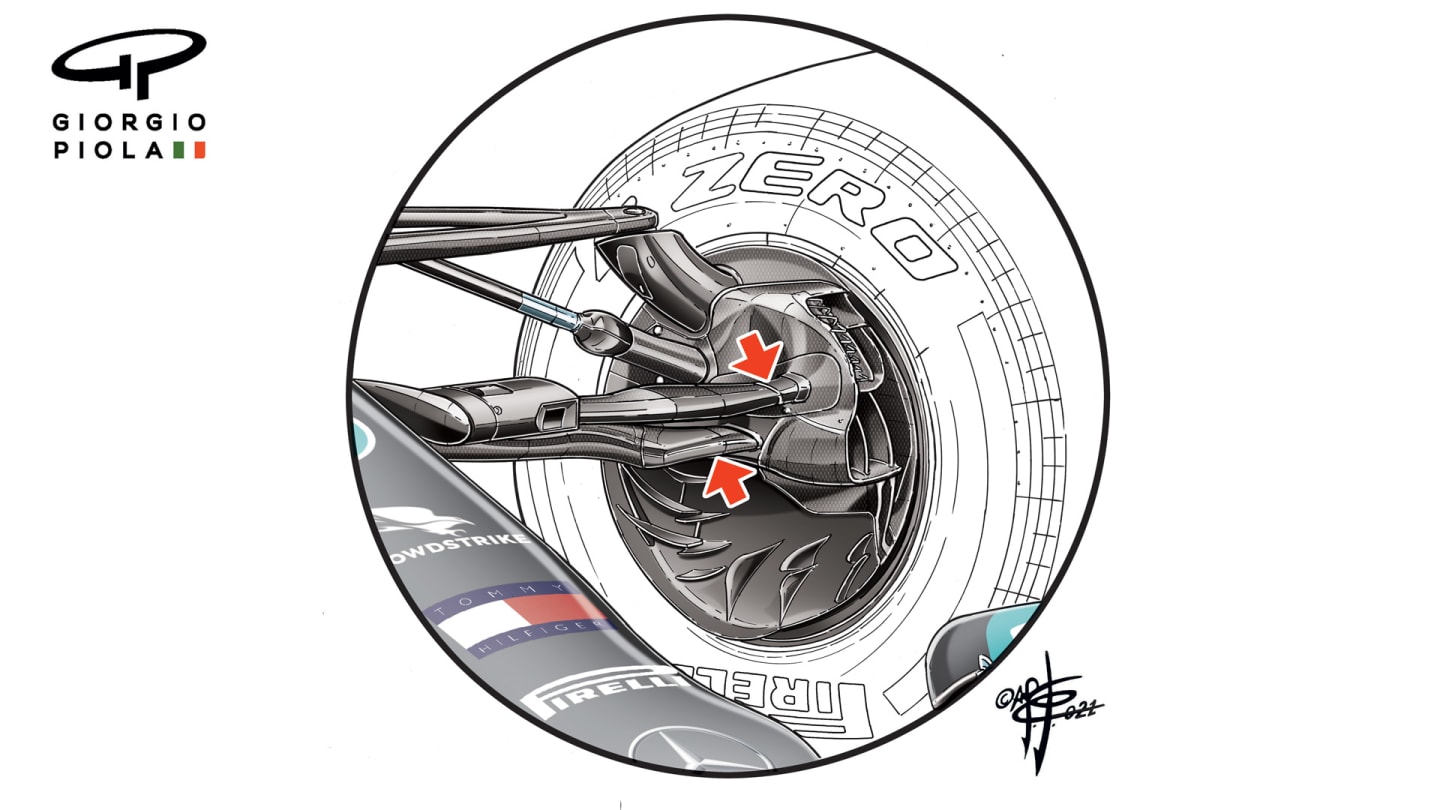
How the front brake ducts are angled allows teams to vary the amount of heat being fed through to the wheel rims. Less when thermal deg is the tyre challenge, more when – like at Baku and Monaco – the challenge is getting the rubber hot enough
Front tyre temperatures are generally more difficult to generate than rears, which are, of course, on the driven wheels. Struggles with front tyre temperature was absolutely the key to Mercedes’ struggles in Baku, at Monaco and, to a lesser extent, at Imola. In other words, in half the season’s races to date, the Mercedes W12 has struggled to instantly generate the required tyre temperatures necessary for good single-lap pace.
Multiple factors determine why one car can easily generate tyre temperature and another can’t. But it’s particularly acute on low-grip surfaces and circuit layouts with mainly low-speed, short-duration corners. Tracks like Monaco and Baku.
READ MORE: 6 Winners and 5 Losers from Azerbaijan – Who shone on the streets of Baku?
This fundamental tyre trait impacted upon everything about Mercedes’ weekend. If the tyres cannot be brought into their temperature window – if the core of the tyre cannot reach that critical threshold – set-up changes won’t have the desired effect and the car will simply not work.
Get it into that window, and everything begins to work in an understandable way. It’s not so much about surface temperatures – but the core. The core needs to be warm enough to bend under load in order to give support to the tread. With the core rigid and unbending, the stress is taken up by the tread which, with no support from the core, simply slides across the track and overheats.
)
Click to enlarge: Outlined in red is the description of Mercedes' brake-bias selector and the buttons to control brake bias on their steering wheel – but the 'brake magic' switch is on the rear of the steering wheel. Diagram courtesy of Mercedes
The overheating surface cannot put decent loads into the core, thereby keeping it rigid, which in turn cannot help the surface etc in a vicious circle. A cool, unyielding core and an overheated surface is the perfect ingredient for tyre graining, whereby the tread begins to rip itself away.
Begin nudging into that area of load where the core is being worked and it can be like a light switch and a virtuous circle is initiated instead. Hence, we saw Hamilton suddenly reach that threshold into Saturday but Valtteri Bottas remaining beneath it for the whole weekend.
At Monaco it was the other way round and in the damp cool of Imola, it was Bottas who struggled while Hamilton got to the threshold. At Istanbul last year it was a similar story.
So what is it with the Mercedes? It seems to be even more sensitive to this trait on the '21-spec tyres and aero regs. It may be to do with the aero traits of the car. If it cannot load up the front as well as the high-rake cars at low speed, it could make initiating the virtuous circle more difficult.
A low-rake car inherently has a less aggressively loaded front end into slow corners than a high-rake one because of the way the aerodynamics of each work.
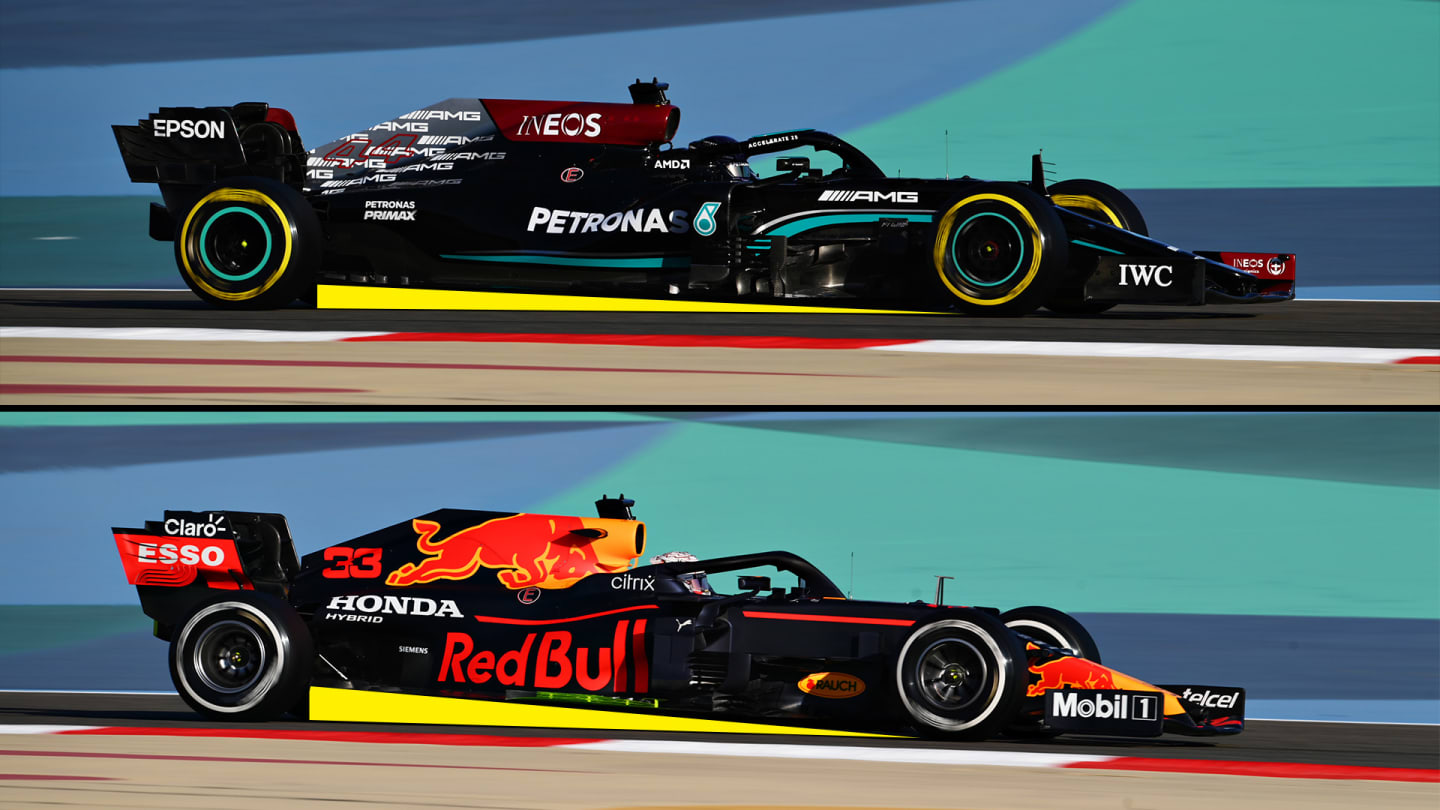
A comparison of Mercedes' and Red Bull's rake angles, from pre-season testing
But the low-rake Aston Martin – with plenty of Mercedes in its DNA - was great with the tyres at both Monaco and Baku. Not as fast as the Mercedes over a single lap but working its tyres brilliantly well. There does seem to be something specific about the Mercedes which makes this a problem.
On the other hand, the Mercedes has shown itself to be superior to the Red Bull at keeping its tyres cool when that is the challenge. Barcelona was a prime example of the other side of the coin where the Merc’s tyre traits, around a track where minimising heat degradation of the tyres is the biggest challenge, won them the race. But on low-grip tracks it’s clearly not a window which can be conjured on demand by the team.
As Mercedes’ James Allison said after Monaco: “Even in years we’ve won championships with some ease, we’ve nevertheless struggled [at Monaco] and although we have generally been on a path that has delivered a car that is really sort of broad-sworded weapon that you can attack most tracks with, here has been a significant Achilles' Heel.
“Particularly ironically, a car which, one of its best weapons has been its usage of its tyres circuit after circuit after circuit, this particular track we always struggle a bit with that and we’re never really getting them happy on a Saturday, so our grid slots are lowly.
2021 Azerbaijan Grand Prix: Restart drama as Hamilton goes off at Turn 1
“And then on Sunday, although we are OK at the start of the stint, by the end of the first stint where most of the crucial action takes place at this rather particular track where there isn’t much opportunity for overtaking except around that first stop, we are normally all out of ideas with a tyre that has died a little sooner than our competitors.
READ MORE: Ross Brawn on Verstappen’s pain, Vettel’s resurgence – and that dramatic finish in Baku
“We have failed to understand that for a number of seasons and we need to figure out from first principles, what are we getting wrong at this track? What is it we are doing year on year that is just not right for here?”
As we head to more conventional circuits we may well see a tyre picture more like that of Barcelona. But that won’t stop Mercedes from searching for the solutions to this particular problem.
YOU MIGHT ALSO LIKE
News Marc Gene hails Ferrari’s Hamilton/Leclerc line-up as the ‘best’ in F1 – but admits he felt ‘sorry’ for Sainz
News Ocon opens up on working with ‘very impressive’ new Race Engineer Laura Mueller at Haas
Opinion HINCHCLIFFE: Why I’m so impressed by Norris’ unconventional and unflinchingly honest approach to his racing
News 'It's impressive and exciting' – Team principals laud F1's motorsport ladder for preparing rookies


